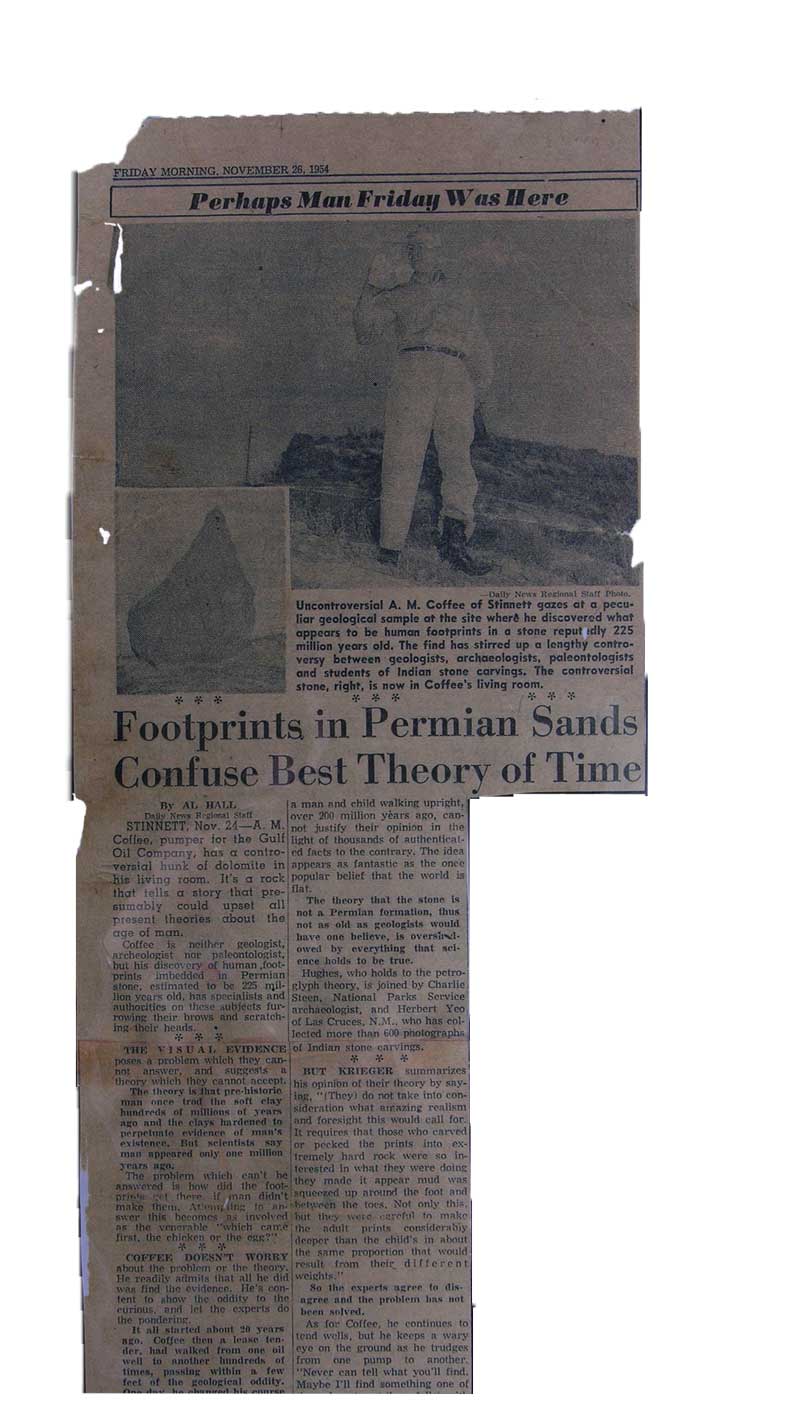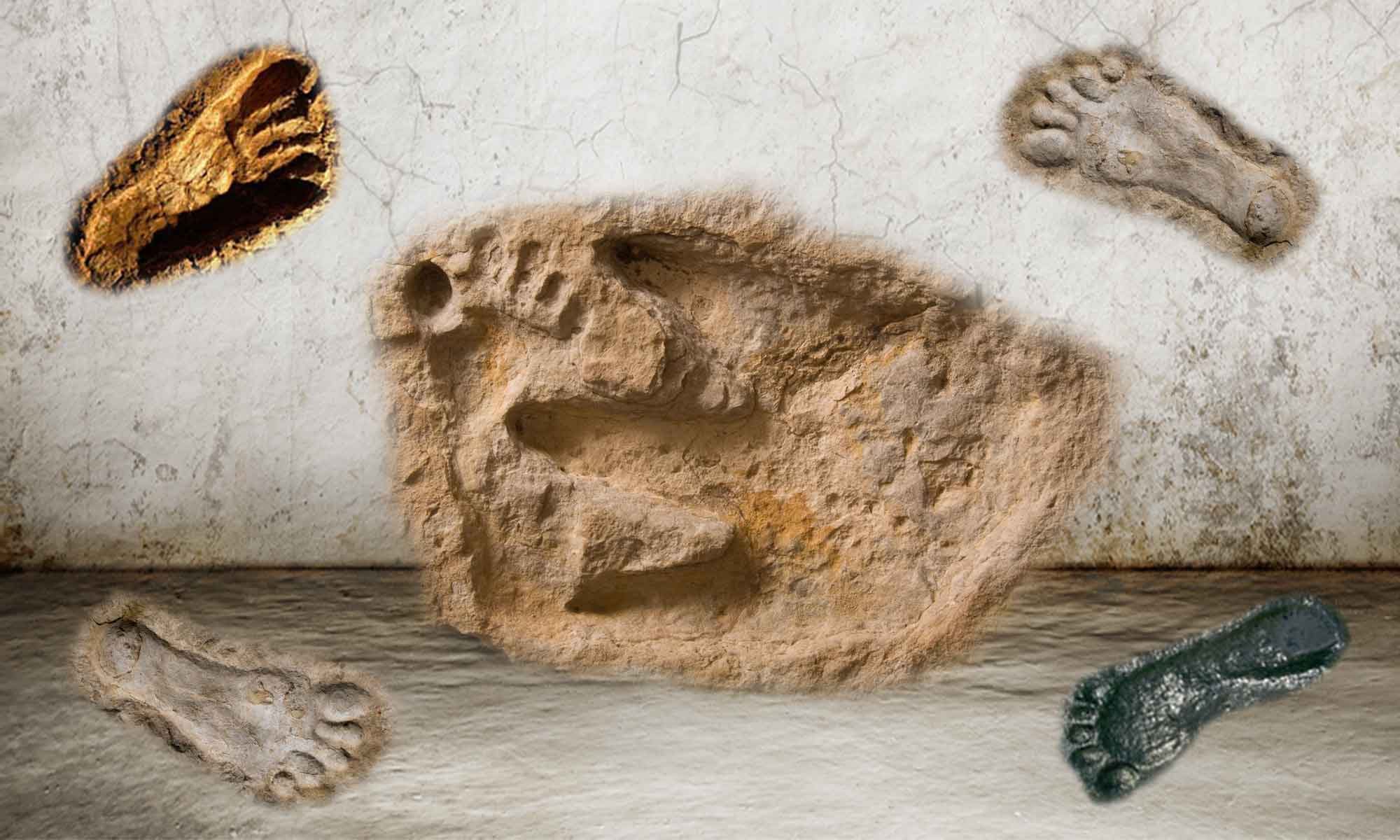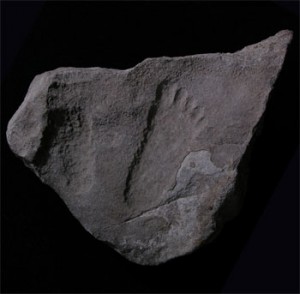
The Coffee Footprint was discovered in 1934, by Stinnett, Texas resident, A.M. Coffee. Mr. Coffee originally discovered a series of 9 tracks while working for Gulf Oil Company. This series of tracks was located approximately 4 miles outside of Stinnett.
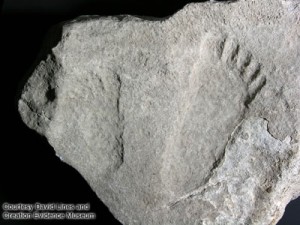 The footprint was removed by Mr. Coffee and ultimately, the 8 other prints were removed by other interested parties. In 1954, an article was published about the discovery of these tracks. You can read the article at the bottom of this page.
The footprint was removed by Mr. Coffee and ultimately, the 8 other prints were removed by other interested parties. In 1954, an article was published about the discovery of these tracks. You can read the article at the bottom of this page.
For many years, this footprint was kept on display at the Stinnett City Hall, but due to the controversy surrounding the track, it was removed. In recent years the footprint has remained in the possession of Fred Coffee, the grandson of A.M. Coffee.
As with any fossilized human footprints found “out of place”, there is controversy
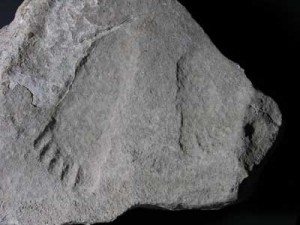 surrounding these tracks. No doubt any evidence that does not support evolution and actually refutes it will be considered controversial.
surrounding these tracks. No doubt any evidence that does not support evolution and actually refutes it will be considered controversial.
See the top image. The adult print is 3/4 inches deep with slight mud displacement (mud push-up) around the footprint and in between the toes. The child print located just to the left of the adult print is less prominent but non-the-less evident. In the image to the right, the child’s prints can be seen a little better.
Recently, I visited my in-laws home. While at their home, I noticed a small casting on their front porch (see picture below). It caught my attention because it looked similar in style to the A.M. Coffee print. The footprint was that of my niece when she was younger. Some skeptics of the Coffee Print have said that the print lacks normal human features and does not look enough like a human print to be take seriously.
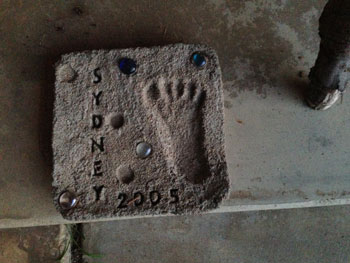
If the Coffee print would have been found in an appropriate rock layer, it is doubtful if skeptics would have had a problem with accepting the print as authentic. Take for instance the Laetoli prints which are accepted as authentic human footprints. 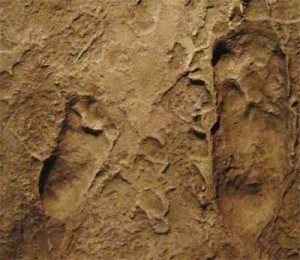
http://en.wikipedia.org/wiki/File:Laetoli_footprints_replica.jpg
The Laetoli footprints as see in the image to the right are accepted as legitimate because of the location were they were found. If the Laetoli prints would have been found in a rock layer not acceptable for human existence, then they would have been rejected as legitimate human prints or labeled as faked or carved.
In 1954, the Coffee Print came under investigation and the following article was published in a Texas Newspaper.
Content of Article Below:
By AL HALL (Daily News Regional Staff) STINNETT, Nov 24, 1954.
A.M. Coffee, pumper for the Gulf Oil Company has a controversial hunk of dolomite in his living room. It’s a rock that tells a story that presumably could upset all present theories about the age of man.
Coffee is neither geologist, archeologist, nor paleontologist, but his discovery of human footprints imbedded in Permian stone, estimated to be 225 million years old, has specialists and authorities on these subjects furrowing their brows and scratching their heads.
The visual Evidence poses a problem which they cannot answer, and suggests a theory which they cannot accept. The theory is that pre-historic man once trod the soft clay of hundreds of millions of years ago and the clays hardened to perpetuate evidence of man’s existence. But scientists say
man appeared only one million years ago.
The problem which can’t be answered is how did the footprints get there if man didn’t make them. Attempting to answer this becomes as involved as the venerable “which came first, the chicken or the egg?”
It all started about 20 years ago. (A.M.) Coffee then a lease tender, had walked from one oil well to another hundreds of times, passing within a few feet of the geological oddity. One day, he changed his course slightly. The right conditions of sun and shadow revealed the indentations in the stone. One was the footprint of a full grown man, the other that of small child.
He rubbed his eyes in disbelief, found the footprints weren’t an hallucination, and looked for more. In all he discovered 10 or 12 in the grey-white stone at the crest of the Caprock escarpment.
He pried loose his original find and carried it home. But one 65-pound souvenir was enough. The others he left for experts.
First to be told of the unique discovery was Coffee’s boss, S.G. Forney, who hauled away some more of the singular impressions. The word spread and soon all of the ancient footprints had disappeared. The only one that can be accounted for is in the Panhandle A&M College Museum at Goodwell, Okla.
But before they all disappeared, Alex D. Kreiger a University of Texas professor and an authroity on early man in North America visited the site. Other experts included Glen Evans, and former geologist for the Texas Memorial Museum. Jack T. Huges, curator of paleontology for the Planins Panhandle Museum at West Texas State College at Canyon, and Floyd V. Studer, curator of archaeology for the same museum.
Although they have never become fully convinced of any of the numerous possibilities for the origin of the strange footprints, they have been able to discount some of the theories.
The preponderance of opinion declares the ancient indentations are petroglyphs, carvings in stone. But those how take issue with this supposition point out that they do not conform to other drawings of the human foot. Neither were they found on the wall of a cliff or the protected side of a large rock, where such drawings usually are found.
Although some have suggested that they might be freaks of weathering, the dozen or more identical imprints make the suggestion highly improbable.
Even those who hold out for the more highly improbable idea that they actually were made by
a man and child walking upright over 200 million years ago, cannot justify their opinion in light
of thousands of facts to the contrary. The idea appears as fantastic as the once popular belief that the world is flat.
The theory that the stone is not Permian formation, thus not as old as geologists would have one believe, is overshadowed by everything that science holds to be true.
Hughes, who holds to the petroglyph theory, is jointed by Charlie Steen, National Parks Service archaeologist, and Herbert Yeo of Las Cruces, N.M., who has collected more than 600 photographs of Indian stone carvings.
But Krieger summarizes his opinion of their theory by saying, “(They) do not take into consideration what amazing realism and foresight this would call for. It requires that those who carved or pecked the prints into the extremely hard rock were so interested in what they were doing they made it appear mud was squeezed up around the foot and between the does. Not only this, but they were careful to make the adult prints considerably deeper than the child’s in about the same proportion that would result from their different weights.”
So the experts agree to disagree and the problem has not been solved.
As for Coffee, he continues to tend wells, but he keeps a wary eye on the ground as he trudges from one pump to another. “Never can tell what you’ll find. Maybe I’ll find something one of (unknown amount of text missing)
